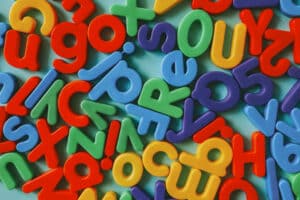
If you’re a teacher and you’re about to begin a new school year then you’ll want to arrive on day one having prepared a few icebreakers, games which get the students talking to each other and to you. Any kind of icebreaker game for students, whether for adults or kids, can help ease awkwardness or tension in the classroom and encourage interaction.
Icebreaker activities are particularly important if you’re teaching English as a foreign language, since they can help to break down cultural barriers too. If you’ve done any teacher training courses for English teachers, such as the gold-standard CELTA certification, then you’ll know just how important it is to build camaraderie with and among your pupils from day one. The CELTA certification ensures thorough preparation in contemporary teaching techniques, no matter whether you’re taking the CELTA course online or in person, and these kinds of icebreaker games fall into this methodology.
What exactly are icebreakers for students? As the name suggests, these are activities designed to “break the ice” and ease the initial awkwardness of group settings. Typically light-hearted and conversation-based, they require minimal to no materials and are easy to implement. Students might be asked to share interesting facts about themselves or collaborate to discover details about their classmates, all of which encourages interaction, builds rapport and sets a positive tone for future learning.
So, now that we understand why get-to-know-each-other games are so important, let’s take a look at a few examples. Here, then, come 10 popular icebreaker games for students:
With this icebreaker game, there are designated sides of the room which represent different answers to a general question. Students are asked to move to the side which best represents their perspective, a fun way to uncover common interests and get everyone moving. For example, one wall might represent summer and one winter and students are asked to go towards their preferred season.
This is a similar game to “This or That?”, only now the prompt is “Would you rather?”. Once the class gets the hang of the game, it’s common for the teacher to challenge the class to come up with the questions, the more obscure the better.
In this playful icebreaker, each student writes a fun fact or answer to a prompt on a piece of paper, before crumpling it into a “snowball” and tossing it into the middle of the group. Students then take turns to uncrumple and read aloud a “snowball” and try to guess who wrote it, adding a level of mystery and intrigue to the activity.
This game involves a beachball, which has different questions written on it. The ball is passed around the room and when each student catches it, they have to answer the question closest to their right thumb. It’s a simple game but a popular one, as people of all ages enjoy a game of catch.
A classic icebreaker, this one does as the name suggests. Each student has to state three facts, about themselves, with two of them being true and one of them being a lie. The others have to try to identify and guess which is which.
The classroom is divided into small groups, which are tasked with working out a certain number of things they have in common. The more abstract, the more points they get. It’s the perfect way to stimulate conversation and to ensure the class gets to know each other.
This game turns mingling into a mission, getting students talking to as many of their peers as possible. For each round of the game, students are tasked with finding a classmate who possesses a certain trait, experience or skill. For example, they might be asked to find somebody who has a pet dog, or somebody who supports a certain sports team.
“Classmate bingo” is similar to “Find someone who…”, only this time there are multiple descriptive prompts, arranged on a sort of bingo card. The students need to ask lots of questions and really get to know the backgrounds of their classmates, in order to fill out a full row on the bingo card and win the game.
Summing this game up, the class works together to create a story. One student will come up with the first line, before the second student repeats the first line and adds another. This goes on and on around the classroom, testing students’ memory skills and imagination, and often creating funny moments along the way.
With this icebreaker game, students are challenged to count or follow a pattern but with a twist. At specific intervals, a number or word in the sequence must be replaced with the word “beep”. For example, the teacher might state that every third number is to be replaced by “beep”, in which the case the correct order would be: “one”, “two”, “beep”, “four”, “five”, “beep”, “seven”, and so on. It’s a lot harder than it sounds and can be quite fun, which is what icebreakers for the classroom are all about!
These icebreaker games for students are simple, effective and adaptable to different age groups and classroom settings. Whether you’re teaching young learners, teenagers or adults, starting your lessons with a fun, low-pressure activity can transform the atmosphere and create a more connected group. By investing just a few minutes at the beginning of a course, you’ll foster communication, reduce anxiety and set the tone for a successful and collaborative learning experience.

